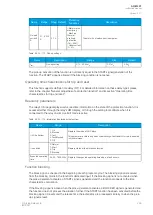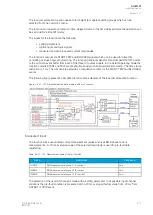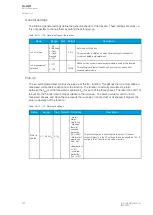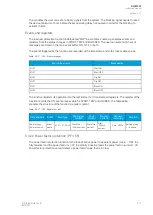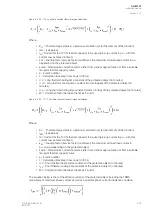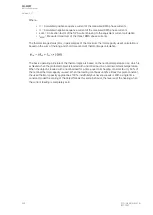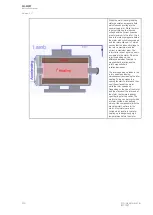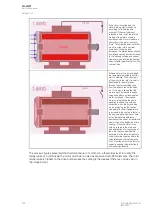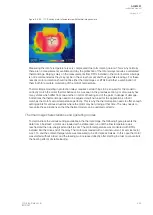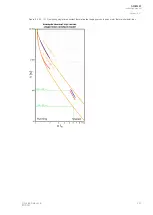
Event block name
Event names
UPF1
Alarm OFF
The function registers its operation into the last twelve (12) time-stamped registers. The register of the
function records the ON event process data for START, TRIP or BLOCKED. The table below
presents the structure of the function's register content.
Table. 5.4.22 - 189. Register content.
Date and time
Event
Pre-trigger PF
Fault PF
Pre-fault PF
Trip time
remaining
Used SG
dd.mm.yyyy
hh:mm:ss.mss
Event
name
Start/Trip -20ms
power factor
Start/Trip
power factor
Start -200ms
power factor
0 ms...1800s
Setting group
1...8 active
5.4.23 Machine thermal overload protection (TM>; 49M)
The thermal overload protection function for machines is used for the thermal capacity monitoring and
protection of electric machines like synchronous and asynchronous motors and generators. This
function can also be used for any applications with single or multiple time constansts, such as inductor
chokes, certain types of transformers and any other static units which do not have active cooling apart
from cables and overhead lines.
The function constantly monitors the instant values of phase TRMS currents (including harmonics up to
31
st
) and calculates the set thermal replica status in 5 ms cycles. The function includes a total memory
function of the load current conditions according to IEC 60255-8.
The function is based on a thermal replica which represents the protected object's thermal loading in
relation to the effective current in the object. The thermal replica includes the calculated thermal
capacity that the "memory" uses; it is an integral function which tells apart this function from a normal
overcurrent function and its operating principle for overload protection applications.
In heating and cooling situations the thermal image for this function is calculated according to the
two equations described below:
A
AQ
Q-M257
-M257
Instruction manual
Version: 2.07
222
© Arcteq Relays Ltd
IM00021
Summary of Contents for AQ-M257
Page 1: ...AQ M257 Motor protection IED Instruction manual...
Page 2: ......


